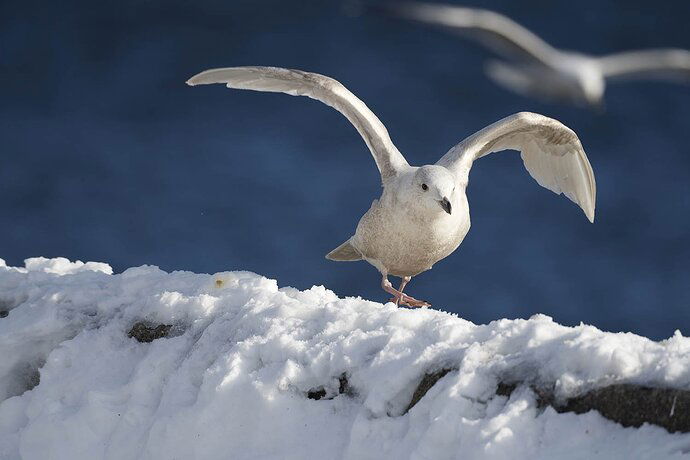OK, this is progress! The image looks good technically, with good focus, sharpness and tonal detail.
I second the cropping/composition suggestions by @Keith_Bauer.
On to the processing: Before you get into PS, a raw file opens in Adobe Camera Raw (ACR) which is not PS but a “helper program” for it. Many people use Lightroom’s Develop module as that first step of raw processing, and others use Capture One or several other programs. ACR is the same engine as LR Develop with a slightly different interface but about 95% of the same sliders and controls.
Please – can you tell us what version of PS? What computer (Mac, PC or something like a tablet?) Recent or dated?
As Keith said, this image is OK without any work on the sliders, but most often you would take advantage of the tonal overhead in a raw file by adjusting the sliders in the raw converter for exposure, contrast, shadows, highlights, blacks and whites, and color temp and tone to give a good starting point.
Keep contrast on the low side, as you can increase it in PS but you can’t decrease it without subtle tonal damage.
In PS, use some of the good plug-ins for noise reduction, such as Topaz DeNoise. Save your money on sharpening plug-ins and spend it on good lenses. Real sharpening is a myth, and is done by creating halos on edges. The caveat is that they have to be too fine to be noticed, but if you subsequently resize an image, they will cause problems. There are techniques in PS that give an appearance of larger-scale sharpness such as the high-pass filter technique. The Clarity slider in ACR is similar but be careful of creating even small areas of blocked blacks or blown whites in the raw stage. Any areas like that are set on cement when you go to PS.
Exporting from PS may depend on your version – what is it?
An aside: I just dragged a handy iPhone picture from my desktop into PS to see how to export from it, as I always export from Lightroom. I was surprised to see it shows the color space as Display P3…
In the newer PS versions, to export a JPEG for web posting:
File > Export
Choose Save for web (legacy)
There are other export choices but they don’t give you enough control and some may not embed the profile. In that case you need to convert to sRGB in PS. In that case browsers will display the image colors properly.
Choose JPEG
Check Embed Color Profile
defaults for the other settings will be OK
Choose the size and Save
Now, here’s the other big issue with PS:
Go to Edit > Color Settings (for a Mac) – or for a PC I think it’s in a different menu??
Choose a working space – for a beginner at all this, sRGB is safe, Adobe RGB is OK, please avoid the wide gamut of ProPhoto until you know a lot more about color management. Any other spaces you see listed are to be ignored – they are for specialized legacy or prepress use.
Check the 3 boxes for warnings, so you will be warned when you open an image in PS (such as from a smartphone) that has a different color profile. You will want to convert it to your working space.
You only need to do this once but you will need to do it every time you upgrade PS.
NEVER “assign” a profile unless you know what you are doing – that is for advanced use, such as an image that has been scanned and has no embedded profile, and ONLY IF you know the profile of the scanner and have it available to assign.
Apologies if you know some of this, but a grasp of “the whole picture” is important. A lot to digest here! I’d suggest printing this for reference.

